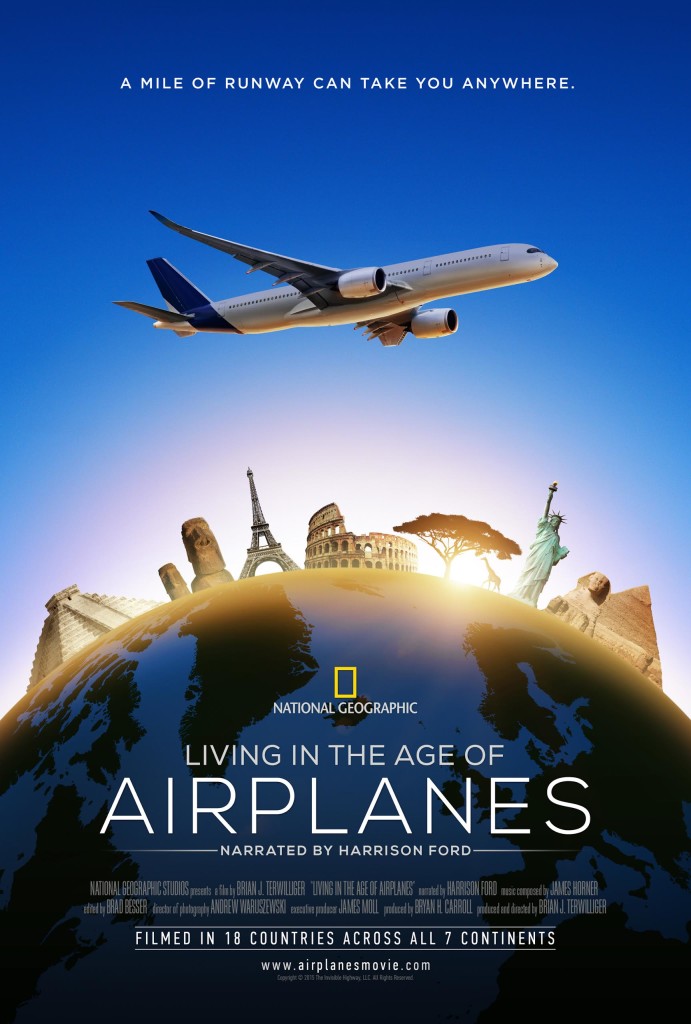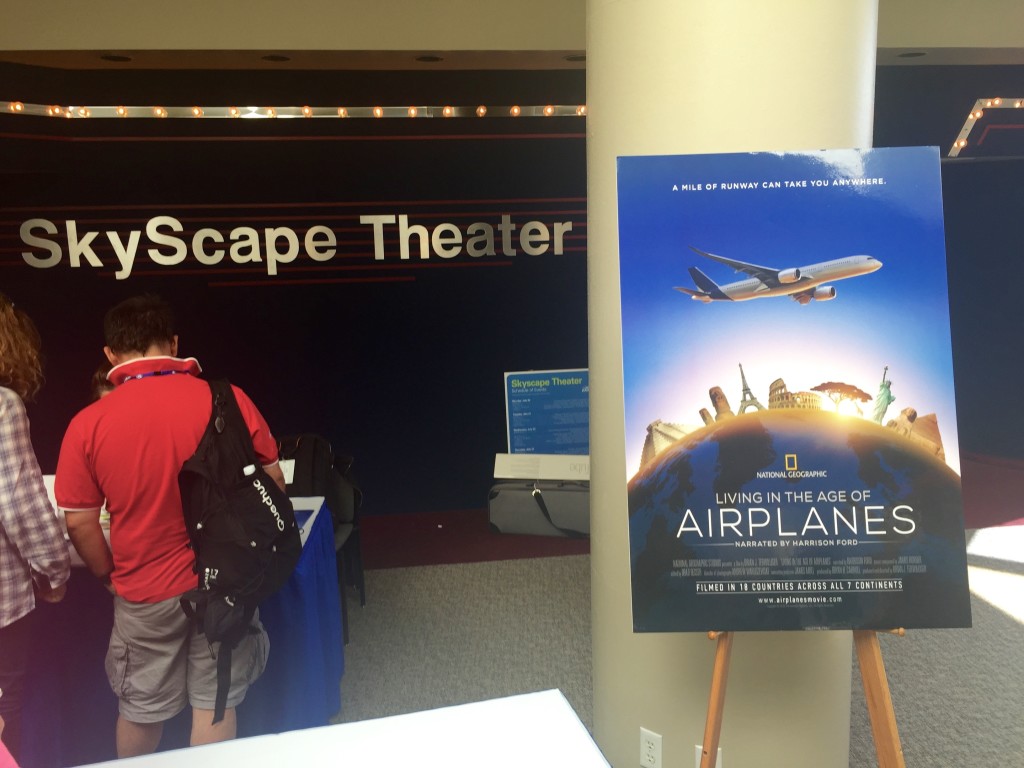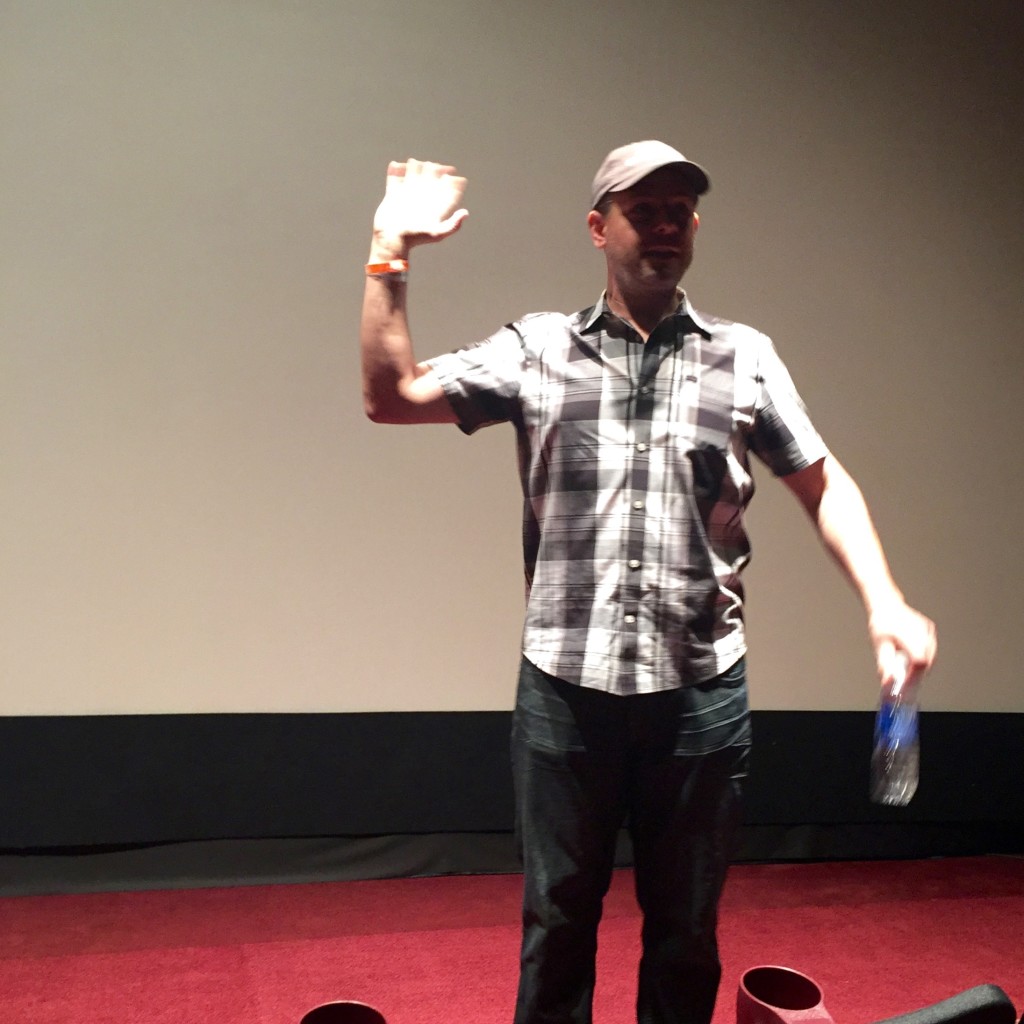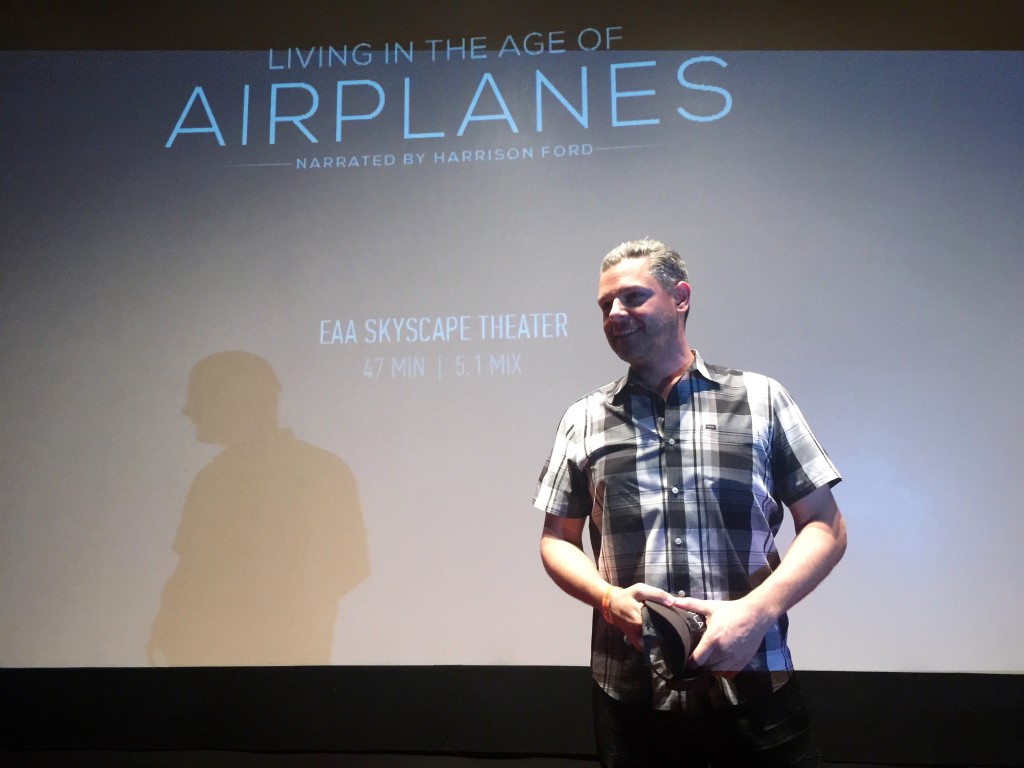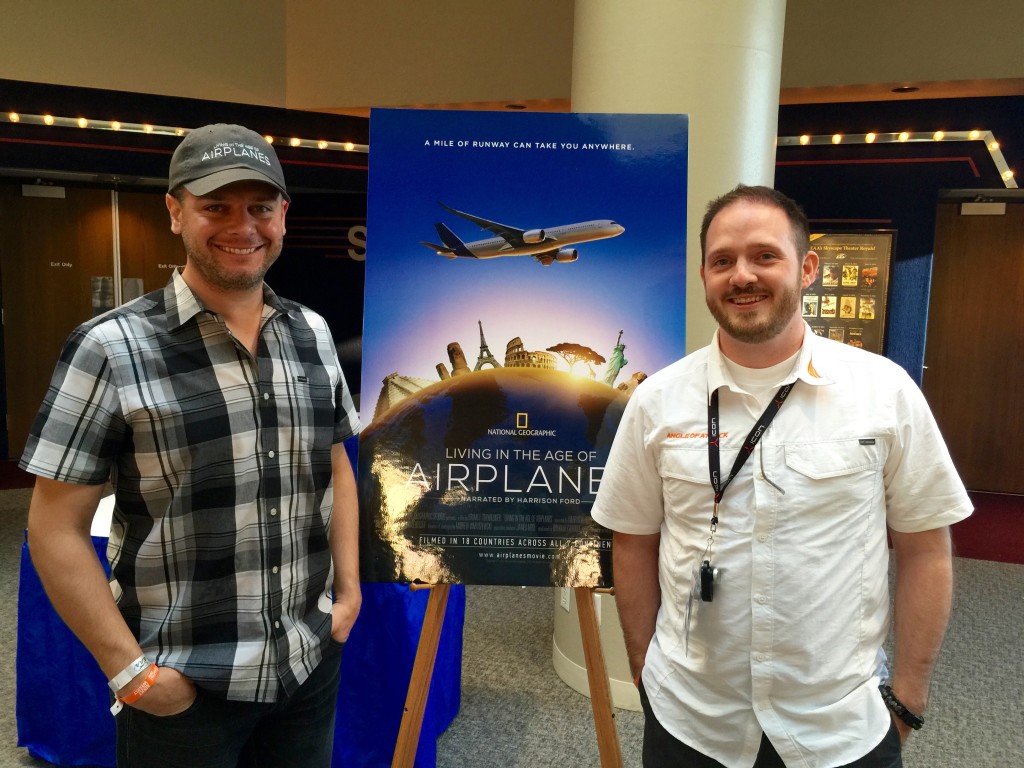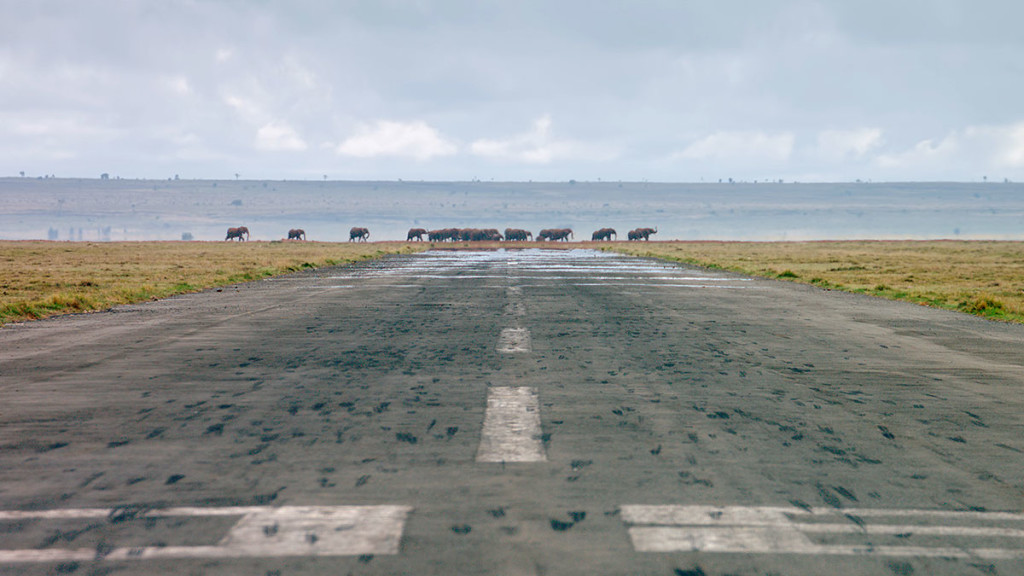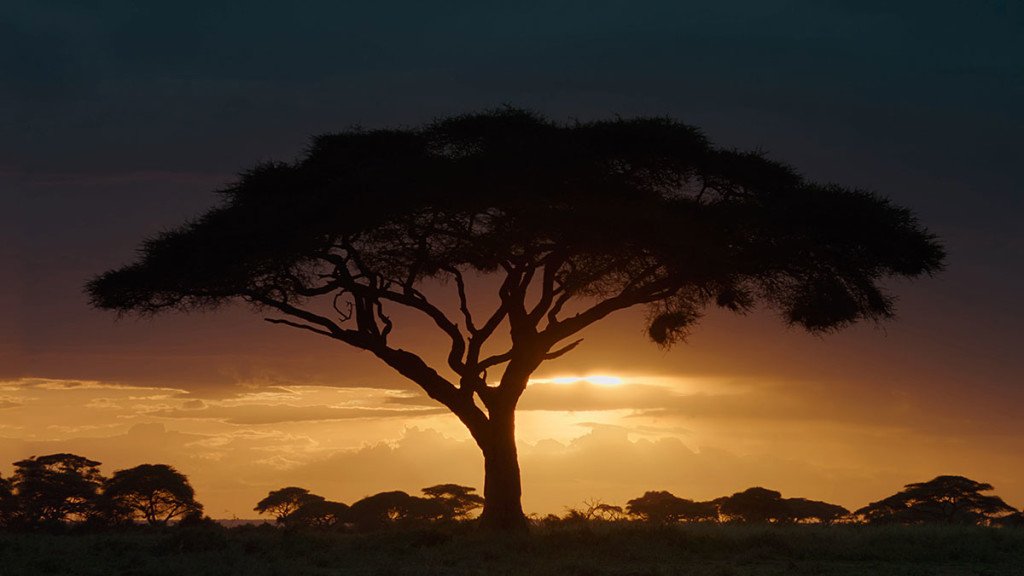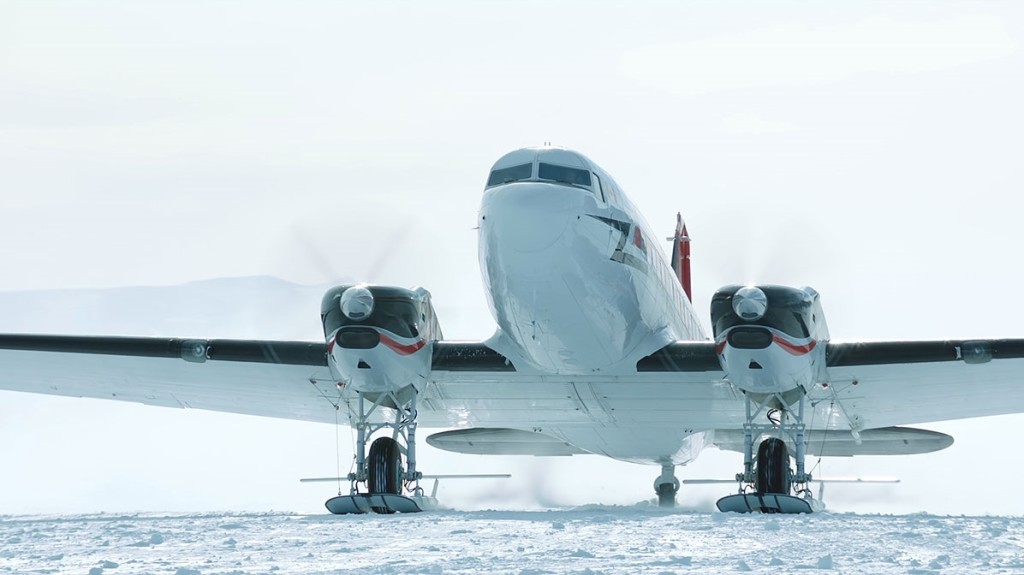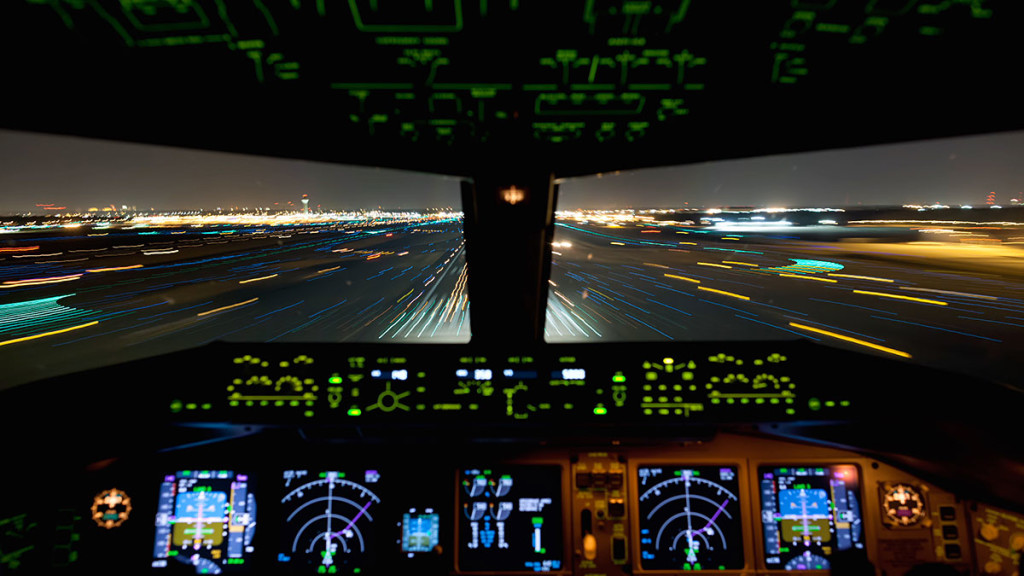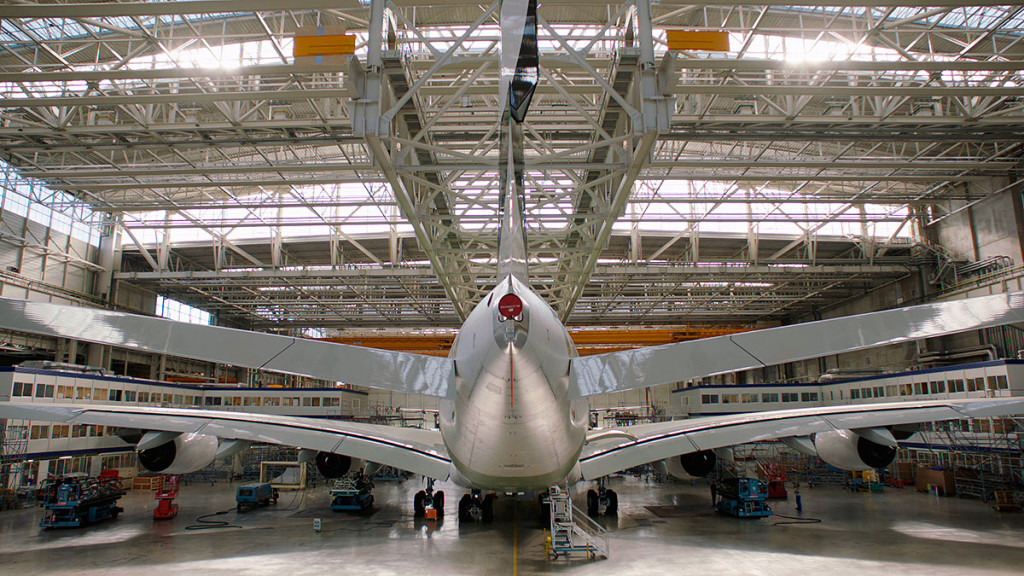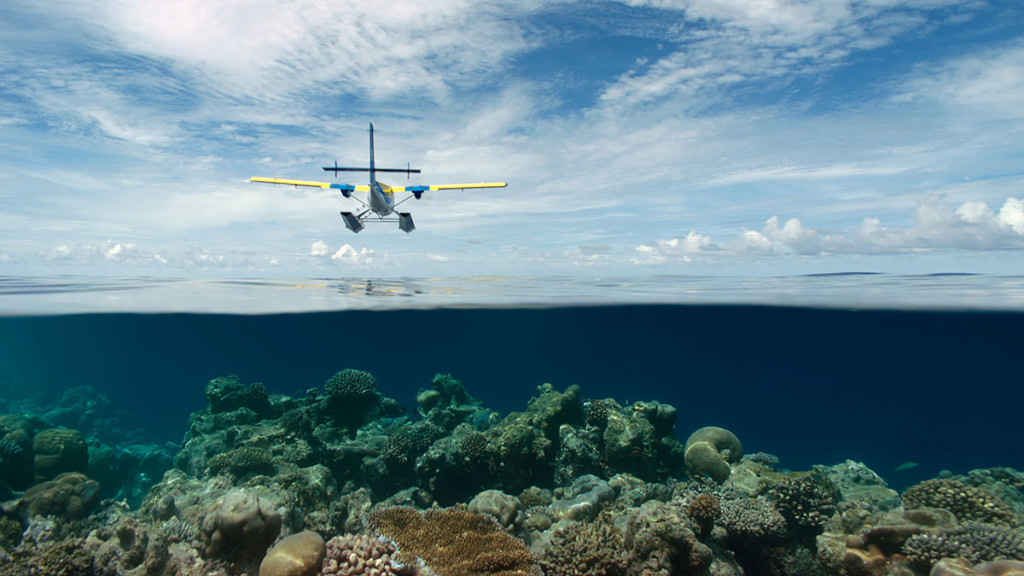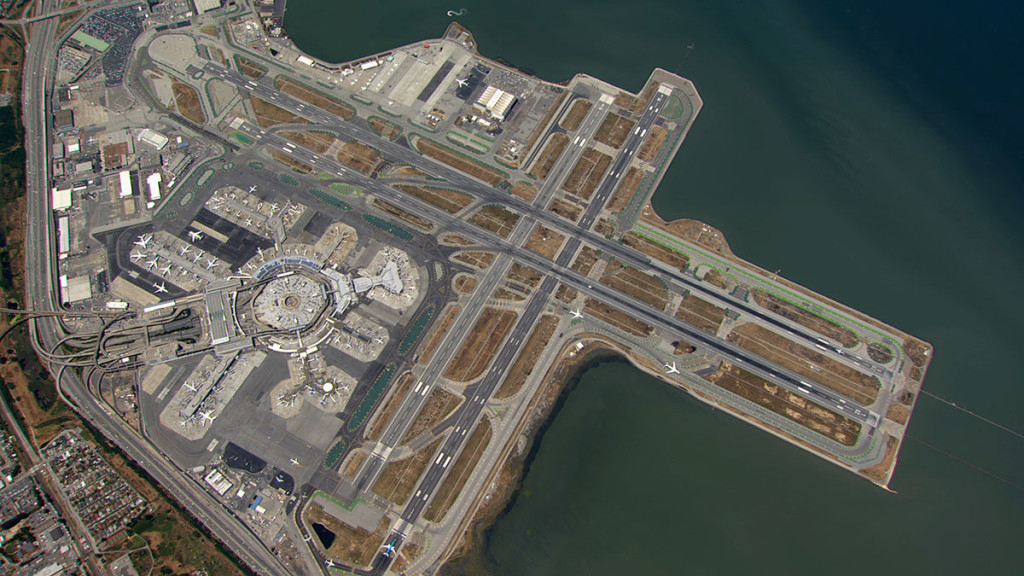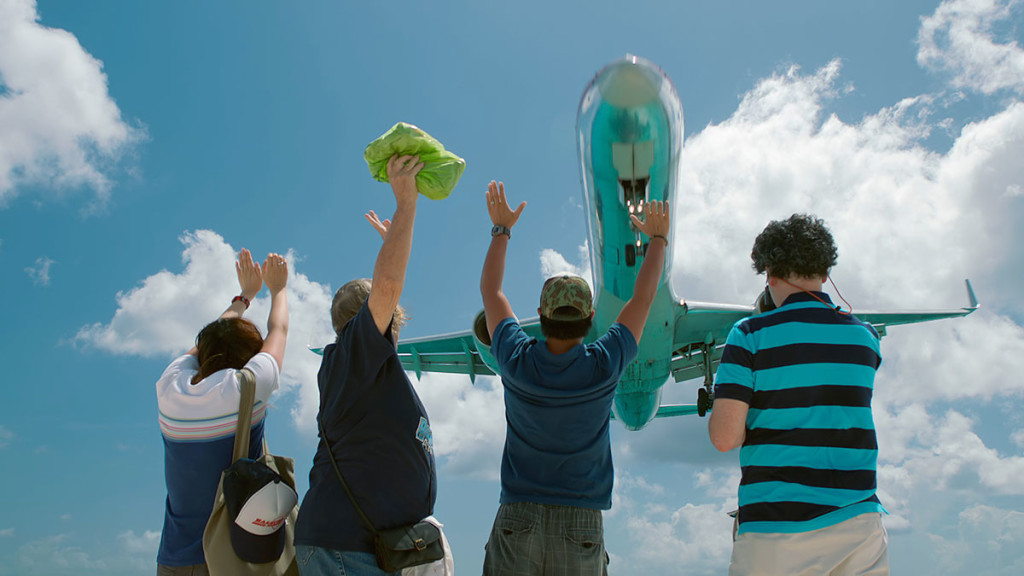
Today’s Flight Plan
Have you seen the movie One Six Right? If you haven’t, you should. The director, Brian Terwilliger, is incredibly talented. Brian has been up to something very special since the making of One Six Right. Of course, it’s another aviation movie.
Over the last 6 years, Brian has been working on Living in the Age of Airplanes.
This jaw dropping film takes a step back from the pilot community that so loved One Six Right, and approaches the larger task of the impact the flying machine has had on humanity.
Showing scenes from all continents, Brian weaves a tale of aviation history that is simply awe inspiring.
Narrated by Harrison Ford and composed by James Horner (both aviators), Living in the Age of Airplanes, a new giant screen film experience from National Geographic, takes you on a journey from prehistoric times to now- the Age of Airplanes.
This movie brought me to tears. It is that impactful and powerful.
Useful Links
Living in the Age of Airplanes
One Six Right
Terwilliger Productions
Credits
Brian Terwilliger
Huge thanks to Brian for joining us on AviatorCast. He’s a busy guy promoting this film. He and his girlfriend were kind enough to stay after the film so you guys could listen to this. Thanks again, Brian. Throttle On!
Crew
Major thanks to the amazing Angle of Attack Crew for all their hard work over the years. Our team works incredibly hard, and they’re very passionate about what they do.
Now What?
iTunes Subscribe
Want to get regular updates through iTunes? This is the easiest way to automatically download your podcast, and take it on the go. Make sure to SUBSCRIBE HERE.
Email Signup
Want us to let you know via email when episodes of AviatorCast are released? We can do that, too. SIGNUP ABOVE.
Get Started Today!
Want to get started with some of our video training? Go to our main page and signup for Aviator90 (our basic and free course) or other pay products we have.
Transcript
[transcript]
Chris: Welcome to another 8-point roll episode of AviatorCast in celebration of National Aviation Day. So on this episode, we talked to the director, producer, writer, editor of Living in the Age of Airplanes. His name is Brian Terwilliger. He is a very, very, very talented filmmaker who will invoke a lot of emotion in pretty much anyone that watches his films, and especially if you are passionate about aviation, you’ll really enjoy his work because the last few films that he’s done have been aviation-focused. So the first film that he did was One Six Right which is an absolutely amazing, amazing film. Maybe a little more pilot-centric for you pilots out there which there are a lot of you listening. And then his new film, Living in the Age of Airplanes which was eventually picked up by National Geographic, is more in overreaching how aviation has affected humanity, and it’s a big picture view not necessarily for pilots, not a lot of nerdery about the actual flying but more how it’s really affected humanity, and it’s such a cool, cool representation of that, and ends up just becoming this powerful emotional moment at the end of the movie.
Now, there are some spoilers here. If you haven’t seen the movie yet, it’s already out. It’s in a lot of theaters nationwide and it’s gaining more traction. So make sure that you check it out, Living in the Age of Airplanes. You can find the URL at AirplanesMovie.com. Really such a good film guys. It was great to see it in person, and then after that fact, Brian was nice enough to sit down for me for a 20-minute interview, kind of a condensed interview where we learned more about what it was like to make this film the ideas behind it and also him as an aviator. We talk to a lot of aviators on AviatorCast and so we get to know about his passion for aviation a little bit. Very, very cool. I hope you guys enjoy it. It’s an inspiring film so make sure that you really do go out and try to find a theatre that is holding it. If you don’t find a theater that is, you can request it from your local theatre and it being such a supported film, meaning that it’s National Geographic, it’s very likely that you could get it in a local theater especially like some of those science center theaters like planetariums of Imax screens. This is the perfect place to request that. So, awesome show. I hope you guys enjoy this interview with Brian Terwilliger. If you guys want to skip this one and go see the movie first, I would recommend that because we do give away some spoilers here. So here we go, let’s get into it with Brian Terwilliger who is the filmmaker for this new movie, Living the Age of Airplanes, and the classic One Six Right. So here we go.
Alright everybody, we are honored to have a very special guest with us today, Brian Terwilliger, right? That’s how you pronounce your last name. It’s a tounge-twister. Brian, what do you do?
Brian: I’m a filmmaker, documentarian.
Chris: And what would people know you for?
Brian: Well, for pilots, they probably know One Six Right which was a film, my first documentary came out in 2005.
Chris: Great. And what’s your most recent film? We’ll talk about that today of course.
Brian: My most recent film just came out, it’s called Living in the Age of Airplanes, and it’s about how the airplanes changed the world.
Chris: Great. Now, when I was flying in the lower 48, I live in Alaska now, I actually did a flight to Venice after I saw that movie and I got cleared to land One Six Right and I was just so excited. It was the coolest thing. For a pilot, it’s literally a movie that at some point will bring you to tears and I’m sure that was part of your intention with that film, to invoke that emotion about that passion.
Brian: Indeed. I mean, when people tell me that, I mean my gosh, I’ve heard the story, it amazes me everytime that people actually are so moved to go and set foot there and land there and get cleared to land. It came from an emotional place within me to film itself so when it resonates and connects with people emotionally, it’s certainly extremely rewarding and it’s exactly what I would I would hope that it might do and when it does, it’s a wonderful thing.
Chris: Perfect. So the first big question I always ask our guests on this show is how did you initially fall in love with aviation?
Brian: I don’t know the moment that I first fell in love with aviation but it feels like it’s been forever. Ever since I was a little kid, I went to air shows, my whole room was full of movie posters, aviation months, the calendar every year, whatever it might have been, airplanes, airplanes, airplanes. It’s always been that way for me. And then I got into building autoplanes and flying radio-controlled model planes as a teenager and then eventually, I always wanted to be a pilot and that was sort of part and parcel of the obsession with planes and aviation as a kid, I’ve seen the Blue Angels fly many times growing up in the East Coast. And then my friend, my best friend who was just as obsessed with airplanes and aviation as I was and model planes, he ended up going to take flying lessons and he did. In fact it is licensed I think. He was 18 at that time.
And then he took me up and it was incredible that here is my friend who I have known forever and fly model planes together is flying. I mean, I’m looking around, it’s just him and me and we’re in a plane and we’re flying, and it was incredible that you really could set out, take a lessons, take more lessons, see it through to the end, become a pilot. And so it was a reality check for rather than saying “Yeah, I want to be a pilot someday, I’m going to be a pilot.” Rather than that future tense, it’s “I’m getting pilot’s license now and then eventually you see it through and then you become a pilot.
And so there was that, a lightbulb went off for me that I’ll stop talking about it. I’m going to go out and do it, and I did. So within three months of that flight, within a week or two of that flight, I had my first lesson. Three months later, I soloed, and then I got my license another six months later.
Chris: And how old were you again at that time?
Brian: I was 19.
Chris: Okay, cool. So at what time did you start film school in that mix?
Brian: So I actually didn’t go to film school. I got a business degree but I was doing film the whole time. I decided because I wanted produce and direct but in order to do that, there are a lot of things that’s not just the technical side but the creative side, but there’s the business side and I think inherently, I’m a creative person, I’ve always liked to build things, design things. Technical aspects of cameras and some of the other things that involved in making movies aren’t necessarily things you have to go to school for and the things you learn on the job, or they’re technical and if you’re technically inclined. So I felt the focus for me I wanted to be business and that’s where I wanted to focus from, an educational or collegiate level education but as far as the film part of things, I was doing freelance work at the end of high school and through all four years of college. So I was doing freelance.
So by the time college ended, I had a resume, most of it was for free or very little money, but I had this resume that I shoot commercials, music videos, some independent feature films in the summer, and then a lot of shows that aren’t around anymore where they interview celebrities and this sort of thing, Movie Magic was the name of the show. Lifestyles of the rich and famous, random stuff. But they would do interviews with celebrities and so we’re going to different studio lots in Hollywood and setting up the interviews. So I would do lighting. I’m always the third man, usually as a sound guy and a camera guy, and they’re doing these interviews that you see in Entertainment Tonight. We did that too.
And then I was the third guy that just helps those two guys. But when you’re just the third guy, you get to do a lot of cool stuff, and anything you’re doing, you’re helping them. And so they give you responsibilities which is really cool. So I got to do quite a bit and I gained a lot of experience over those years. And so by the team I was done with college, I had all those years of experience as well.
Chris: Great. So how did your aviation passion continue from there? Did you continue flying? Did you have to take a break?
Brian: So let’s see. So I was in college I guess and so I just kept flying, and it was uninterrupted. It was all sort of simultaneous. I was getting my license, working in the industry and going to college. It was important for me to finish within those four years. I really wanted to be done with it. School is not my favorite part of all the things we’re talking about today. So I was able to do it in four years and then get out and start really doing what I wanted to do. But it was a very busy few years in my life for sure.
Chris: Great. So let’s talk a little bit about Living in the Age of Airplanes and this movie. And to preface this, I want to give a spoiler alert. So anyone listening to this audio, this podcast, you need to go out and see the movie because we’re about to spoil some things with some questions here. So find your local theater. Let’s see, it’s AirplanesMovie.com. You can find your local theater. If it is not available at your local theater, you can also request that your local theater carry it. So, let’s talk about, because I just saw the film, great visual storytelling, and also to have someone like Harrison Ford narrating it, he was a pilot, also James Horner doing the music, who you said is also a pilot, very cool. Let’s just talk about the process and maybe some of the more unique aspects of your experience in making the film. So let’s just start off with the fun question. Was there any point during the filmmaking that you were scared?
Brian: Scared for my life or scared for the endeavor? You know, I can’t think of any particular moment I was scared. Certainly, maybe overwhelmed or there were stressful times, stressful moments just in the process of a several-year project. Because when you make a movie, you’re doing thousands, tens of thousands, hundreds of thousands of little tiny things everyday that add up to eventually one single experience that is no longer pieces or parts, it’s a thing, it’s an experience, it all comes together. So seeing the force of the trees and having the ability to keep seeing the big picture, there is often a challenge especially as you get later and later in the process, in the editorial process, and the filming isn’t finished and some of those big exciting things or the things that show more progress in the day to day business, “Okay, we got those shots. Okay, we actually got that location. We got even more, like exceeded expectations in terms of what we were able to get.” Well those were exciting and rewarding in all those ways. But yes, there are certainly times where you want to make sure that you are still able to finish the story at the level you started, so there’s always that everyday kind of living with that all the way to the end.
Chris: Is there any particular experience throughout making the film that really stands out to you as something that you come back to and think about quite a bit. Because you travel the world filming this, all seven continents right? So is there anything that sticks out as, not necessarily the money shot because I think you got a lot of money shots in the filming. Does any particular experience stand out to you?
Brian: Yeah there was a few but the very first one right now I think of, we were filming in Africa, in Kenya, and we’re doing aerials in a B3 Helicopter. I’ve never been in a B3, it was an AStar but it’s like very, very nice AStar, quite powerful. And usually they’re B2s in the United States and in Alaska and Hawaii, we did aerials, Los Angeles, in other places, and they’ve always been B2 models. So the B3, and of all places, and I was hoping we’re going to have nice safe helicopters. But they had three helicopters, all of them were B3s. It’s incredible. It’s pretty wild.
So we were filming in air to air with these yellow biplanes, just one shot in the film toward the end of this thing. But we were out in the middle of nowhere filming this thing, and the cloud cover was coming in and we’re going to get the shots that we needed, quite possibly in an hour or two we could, and we were so far from an airport. We as a helicopter could land pretty much anywhere and the plane could land not anywhere but grass strips and there’s dirt in areas all over the place where he was comfortable landing. So we took him up on the opportunity to like “Okay, let’s just put it down here, shut down, and just wait this out. See if we can get the shot.” So we did. And after we landed, all these kids out of nowhere, I don’t know where they came from, but like 80, 100 kids and some parents came out of like nowhere. I have no idea. It was bizarre. There must’ve been some village that was close by. I don’t know.
Anyway, they came over to us and like, we’re all around the airplane and the helicopter, and thought it was the coolest damn thing they’ve ever seen, and seeing it through their eyes, seeing the wonder of this beautiful yellow biplane and this unbelievably beautiful helicopter that I, also was just amazed what we’re doing and where we are. But to see it through these kids eyes. Of course, I couldn’t communicate. But they were, they think we were aliens or something coming down and it was so inspiring, so emotional, so there was something so human about having, somehow creating an experience for them and I don’t know who got out more of it, them or me. Because I was so moved about how special this was, how happy they were, and they were some of the happiest people I’ve ever seen, and that’s a whole another thing. But there’s a moment of just, being in Africa was a highlight for me in general. Kenya specifically just was an amazing beautiful place, the people were amazing and beautiful and that experience was one I never could have anticipate and I can’t imagine repeating it. It was so organic.
But I showed them the helicopter and then when you really see it through their eyes, I mean this thing is crazy, helicopter. It’s crazy. Really, in hovers, you just take off, you can do anything, it really is just an incredible machine. So that was absolutely to me. And a case in point with what the film is about, seeing it through their eyes is the ultimate, having not taking it for granted, having something brand new, and I wanted in the film to be able to make in so many ways aviation brand new to people. And it’s hard because it’s not brand new at all. It’s actually seen as an inconvenience, a frustration or the feeling that someone gets, the mainstream, regular passenger going commercial flying audience. When they think of going to the airport or flying, it’s a chore. There’s a certain association or feeling or anxiety. It’s just the frustration of what they’re going to have to go through. They want to still go because they want to go where they’re going, but that process, I want to make somehow new again and actually not only potentially enjoy that process but be more tolerant of the process because the next best alternative to do what they’re doing is completely unacceptable, so unacceptable you probably wouldn’t even go where you’re going. Because 15 hours in the car or 2 weeks by boat, 2-1/2 weeks to get to Australia. That’s an inconvenience. That’s a commitment. That’s a month to go spend three days there.
Chris: And there’s a line in the movie that I thought was really poignant, it said that if we had to make those sacrifices to go those places, we probably wouldn’t go. And it’s entirely true. And it’s interesting how much of what you just said is in connection to the film because again, spoiler alert everybody, go see the film, it’s important to kind of get these connections. But a lot of the narrative was the fact that civilization started in Africa and spread to all the different continents. Well not all of them, not Antarctica obviously. So it’s interesting that in the filming of such a movie, you were there and you bridged that 5000-year gap that you guys were talking about. So that’s pretty amazing.
Brian: It was pretty amazing. You’ve been there and then the end of the world, Ushuaia, Argentina which is the southernmost tip of South America was a very well-documented endpoint of the human migration and so to be in both of those places at all in my lifetime is amazing, to be there in such a short span of time and then to see that if we really wanted to go between the two non-stop, we really could, and that’s a remarkable concept.
Chris: Yeah. That’s unbelievable. What was it like filming in Antarctica?
Brian: Well that was very cold but unforgettable experience. The South Pole, I learned so much in the making of the film, needless to say. So much of what the film ends up saying and showing or what you might learn from it, a lot this I didn’t know either. It was a discovery process and research process that then becomes a film. Concepts are driving it and our passion force is driving it. But Antarctica, so I never realized that the South Pole, that first of all, it’s 9000 feet above sea level. You’re on a huge amount of ice and it’s ice with bed rock underneath it and there is actually a continent there that’s larger than Australia. But the South Pole is so far away that even when we fly to Antarctica which we did in a jet, an Ilyushin-76 jet leaving from Chile actually, flying out a four-hour flight. Once it gets there, there were two more flights to get to the South Pole and all three airports were ice runways, have to line up with VFR weather, and it’s all just flying by visual clues when there’s not a lot. Long distance horizons and it’s really extreme, it’s an extreme place. Extreme place to fly, extreme place to be. We’re in tents for 11 nights. There is no infrastructure. I don’t even like camping. It was extreme, it was extreme. Negative 40 degrees, sun never sets because we’re there in the summer. But an extraordinary experience.
Chris: Very cool. So how much are you involved in the aviation community these days? I mean obviously, gosh if you do nothing else, you’re doing great. You’ve made two amazing films that inspire both aviators and One Six Right which by the way, you guys announced that the Blu-ray version is coming out, remastered, I’m excited for that, and Living in the Age of Airplanes. So is there anything else you’re doing in the aviation community these days to stay connected or it’s just kind of your day to day flying?
Brian: Well, certainly there is a re-emergence as this film is now coming out because I’ve sort of been secluded for quite some time getting this film made. So it’s fun to be out and here at Oshkosh and being at aviation events and being around aviation community again and sharing it of course with the aviation community and equally sharing it of course with the aviation community and equally sharing it with a non-aviation community is sort of a way to engage the aviation community and bridge that gap. So my focus now is really supporting this film, getting this film seen, and once you finish a film like this, releasing it, it’s like a kid and just a fact that it is now out there and born. It’s important to support it and to have opportunities like this to talk about it, and so that’s my focus now for a little while, at least seven more months to really support this thing and make sure that its voice is being heard and it can play in as many places as possible.
So I really enjoy this part of the film because this is the whole point of the film and the years and the making of the film is to get to the point where it’s finished and it can start doing and saying what you wanted it to say. And its’ a beautiful thing. I love the process of supporting that versus getting secluded again to going to tell another story because you can then dive into some other thing. It’s very fun just to continue to be part of the conversation, fan the flames of the conversation and share the film.
Chris: Yeah. Everything in it is seen. So this is my wife’s question that she came up with, and not necessarily for you, for other people I interview too, and that is who is your aviation hero? Does anyone stand out? Or mentor or something like that.
Brian: Well I can’t single out any one person. It’s probably a collective hole to anyone and everyone that’s pushed it forward, and that’s made it. I don’t mean to speak very philosophically but I understand the question but I think for me, my answer would be kind of like how a movie is hundreds of thousands if not tens of thousands of things that come together to make a single experience in the end. Aviation and the state of aviation today and the near perfection of aviation today, technologies that exist, the options we have, the choices that are possible to regular people, the few hundred bucks to pretty much go anywhere they want is a spectacular moment in time that we live in, and there were people and only people that helped put that together and make that possible.
And to keep of course that going and keep people inspired to keep aviation moving forward and evolving and staying healthy but growing in every way is to me where I’m inspired because it is this thing that it started going so cliché, right? It started with a dream and somebody pursued it and tried and failed and tried again and failed and then maybe never happened in their lifetime and then how many more lifetimes go by but they’re trying and failing and eventually, that will to succeed prevailed and that passion and that belief in continuing to try despite those failures turned into the first man-powered flight, it’s turned into, the rest is history. So here we are, meeting because of the airplane no doubt. I just think it’s an amazing thing and there is so many people that have made this possible and continued to push it forward and I just am inspired by that collective whole of the people that have persevered despite the challenges and sacrifices that are made and have been made and continue to be made to push aviation forward.
Chris: Right. Yeah. And it’s really the responsibility of everybody, lots of people before and now us sitting here as well. I mean, you and your films, me and my podcast here. So I know you’re a busy guy, I’m going to let you go, but to finish up the show, what would you say to perspective aviators that are looking to get into flying? What would your advice be to them? What would your inspirational message to them?
Brian: First of all, aviation needs you. We need you and we need aviation to grow and we need pilots. When you see the film, it’s one takeaway I hope pilots, certainly up and coming pilots, aspiring pilots, will get from the film, is how important aviation is and how much aviation, therefore airplanes, therefore pilots, I mean this very literally, how important the pilot is in the equation even though it doesn’t show it and say it. Aviation is contributing to the world unlike any other thing that I know of in a way and in a level that is profound and it is so important and so many other things depend on aviation. Aviation is airplanes flown by pilots. And pilots are, there is a responsibility, a privilege when you realize how important the airplane is in the world and how fascinating, if someone sees the fascination that the movie tries to connect for people and then it’s just one tiny little leap of that it’s a pilot behind that and you can be a part of that. You can be what makes that world go round and the super shots at the end, and the pilot is the heart of the airplane, and the airplane is the heart of the aviation infrastructure that the movie ultimately shows which is what made the world be what it is and the world we enjoy and all love and this time we’re living in and seeing to the depths of the role of a plane in our lives is something that I hope people will really get from the film and that if you want to be a part of it, you can and being a pilot is probably the most special and important way to partake in this miracle of flying in the age of airplanes.
Chris: Fantastic. You know, there was one scene at the very beginning of One Six Right that made me really emotional. It had a lot of airplanes in it, just flying around. You guys were doing some off distance work, aerobatics, things like that, and that’s the part of that film that made me emotional. The part of this film that made me emotional I think it’s the part that makes pretty much everyone emotional, is at the very end where it talks about you go through all the destinations in the world and that home is perhaps the best destination, and then there are some very beautiful scenes of families from all different cultures which is absolutely amazing storytelling. It was perfect. So the fact that that first film for pilots, that’s what that thing did for me and that’s what this did for me. I think you’re on message and it’s very wonderful.
Thank you so much for joining us, I really appreciate it, and we look forward to what you’re going to do next but we’ll have to be patient because you take your time to get this stuff right. Thanks Brian.
Alright, so I hope you guys enjoyed that interview with Brian Terwilliger. Again, we gave away a couple things but I hope that you come away a little more inspired and with a little more insight into what goes into making a film. This is just such an amazing film. I was brought to tears at the end. This was done really well and I was just so impressed. So again you can go out and request this film. Now following this, I’m not going to go silence, if you guys want to stick around for some more audio, some more Q&A that the audience had with Brian, you’re welcome to do that. This lasts about 20 more minutes, and the audience there in the theatre asked some very, very good questions. The audio isn’t as good, I’m not sitting right next to Brian when he is answering those questions so the audio isn’t as good but I think that if you have headphones on or something, it is still an enjoyable thing to listen to. So thank you so much to Brian for joining us on this little 8-point roll episode of AviatorCast. I hope you guys are enjoying all these so far. We have more to come. And again, stick around for that audio next of Brian. If you choose to go to the next one, then that’s totally fine too. Either way, I will see you guys soon in the next episode or after you’re done listening to the Q&A with Brian Terwillinger. Until then, throttle on.
[/transcript]
Chief Flight Instructor and President of Angle of Attack. Founded in 2006.

Stay Connected
Be the very first to get notified when we publish new flying videos, free lessons, and special offers on our courses.


